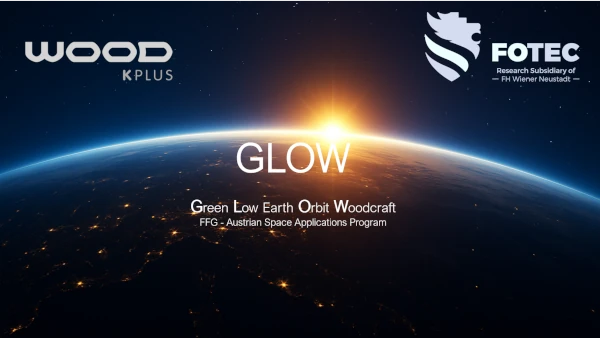Wood K plus from Tulln, in collaboration with FOTEC, Austria’s first ESA_Lab@ (University of Applied Sciences Wiener Neustadt), has launched the GLOW project – Green Low-earth Orbit Woodcraft. This feasibility study explores the potential of engineered wood-based materials as primary structural components for satellites.
Wood K plus from Tulln, in collaboration with FOTEC, Austria’s first ESA_Lab@ (University of Applied Sciences Wiener Neustadt), has launched the GLOW project – Green Low-earth Orbit Woodcraft. This feasibility study explores the potential of engineered wood-based materials as primary structural components for satellites.
The project addresses critical environmental challenges posed by the rapidly growing satellite industry. With tens of thousands of satellites expected to orbit Earth by 2030, predominantly constructed from aluminium and designed for limited operational lifespans, re-entry emissions are becoming a significant concern. Conventional satellites release considerable amounts of aluminium oxide particles into the stratosphere during their incineration, where they may impact atmospheric chemistry.
In contrast, engineered wood-based structures promise a markedly lower environmental footprint. Wood offers favourable strength-to-weight ratios, beneficial thermal properties and near-complete combustion during re-entry, leaving only minimal, harmless residues. Preliminary assessments indicate that wood-based satellites could reduce re-entry particle formation by more than 90% compared to conventional aluminium systems. Additionally, the production of wood-based composites requires substantially less energy, lowering associated CO₂ emissions.
The 18-month project (October 2025 – March 2027) is funded by the Austrian Space Applications programme from FFG and is directly aligned with the ESA Zero Debris Charter and European climate neutrality goals. By combining wood science, materials engineering and aerospace technology, GLOW aims to demonstrate the feasibility of bio-based lightweight structures in space. Beyond satellite applications, the knowledge gained may also open new opportunities in other high-performance sectors such as aviation and automotive.

